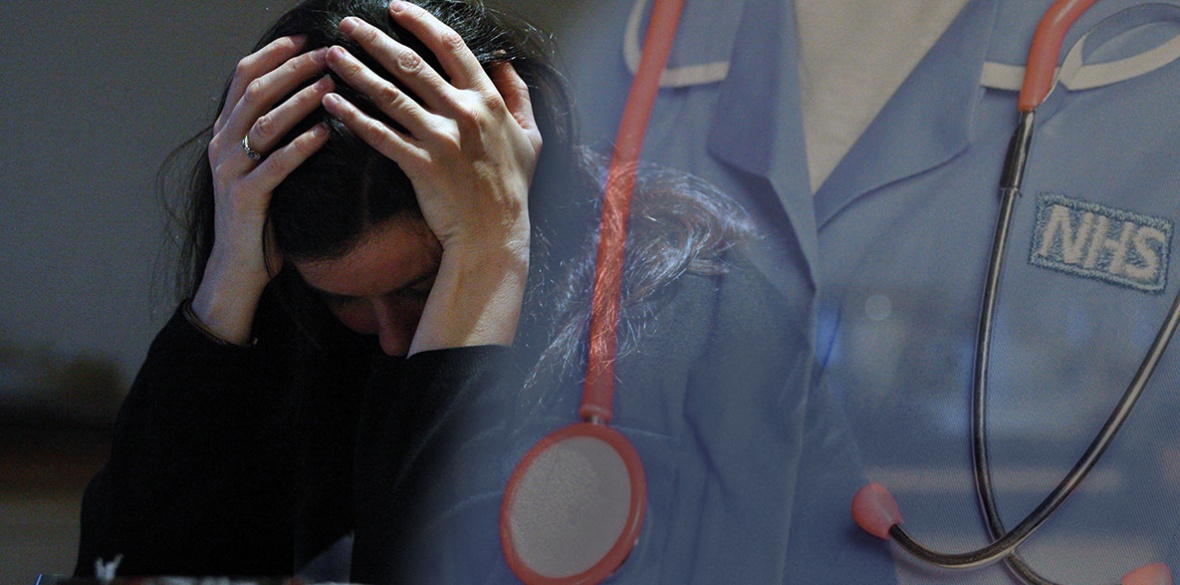This is the last article you can read this month
You can read more article this month
You can read more articles this month
Sorry your limit is up for this month
Reset on:
Please help support the Morning Star by subscribing here
WITH the restrictions of lockdown ending, the government’s mantra often includes the phrase “getting back to normal.”
Apart from this being an obviously offensive statement for those whose normal everyday lives are isolated, there are other issues to consider about returning to life as it was before the pandemic.
For example, despite the suffering and loss of life, there has also been an evident sense of social solidarity. With this has been more awareness of inequality and the disparity between incomes.
Other causes have brought out protesters on the street, in defiance of the government criminalising such direct action.
Would “getting back to normal” stamp out these green shoots of solidarity? After all, the most salient point of this pandemic is how unprepared we as a country were, with services starved of funds, a crisis in housing, mental health and, in particular, social care.
Such big problems might seem beyond our control, especially with an authoritarian right-wing government that seems to evade accountability and lie with impunity in order to reach its goals. Yet, unless such change occurs, we will go into the next crisis equally unprepared.
When we look at services for mental health we might focus on the number of beds or need for more trained nurses; but as mental-health doctor Benjamin Janaway argues, the focus should be on how to prevent problems before they emerge.
“The major issue is the rising burden of illness secondary to an unjust society where people are left behind,” says Janaway.
“It’s not just about changing services, it is about changing the focus of where we implement care. If we can prevent the development of illness by remodelling society and valuing quality of life, such as connection freedom, intellectual stimulation and social reciprocity, as well as empowering women and ethnic minorities, we can prevent illness before it happens.”
The “remodelling of society” and links to the pandemic is something Tina Hearn, a lecturer in social policy at the University of Birmingham has been looking at.

“In order to inform our thinking about possible futures, we need to explore, identify and so gain a sense of what sort of dynamics are involved in the way in which our present is produced,” says Hearn. “In short, identifying what sort of dynamics we need to tackle and change.”
“Therefore, calls for any futures that involve ‘getting back to normal’ are a deeply concerning, even frightening prospect for many of us.
“For a growing number of people their ‘norm’ is to be in a low-paid, often precarious job, with little protections such as unions or sick pay and holiday pay. For such people, in-work poverty and feelings of insecurity are increasingly standard.
“For many people on benefits, ‘normal’ contact with the system can be traumatising, with cuts closely associated with the spiralling rise in people needing to use foodbanks.
“Covid-19 has also illuminated many of the devaluing and dismissive ‘norms’ circulating in the care system, exemplified by the explosion of Covid-19 infections in nursing homes and higher death rates of disabled people, in particular those with learning disabilities.
“So, arguably, returning to ‘normal’ is a worrying prospect for many. However, problems with normal range much more broadly. The Black Lives Matter protests have highlighted how the racialisation of many of our institutions and processes shapes the experience of what is normal for many more.
“The #MeToo protests and recent protests around Sarah Everard’s murder throw light on the gendered forms of oppression that many women experience too. So, no, the idea of returning to normal is not an attractive prospect for most of us.”
Changes to housing benefit, the punitive potential of the new Police, Crime, Evidence & Courts Bill, the enquiry into judicial review and the prospect of the £20 “uplift” in universal credit being removed, to name but a few measures, are all indicators that the direction of travel in re-establishing the “old normal” and the opportunity spaces for a “new normal” to emerge does not bode well.
Yet, despite all that, Hearn doesn’t feel that means we should “recline into despondency,” as she firmly believes other visions are possible and that, arguably, fragments of such visions are emerging.
“One thing that has emerged from the Covid-19 event, is the illumination of the corrosive nature of inequalities in our society,” Hearn argues.
“People on low incomes, those with precarious jobs, people who experience racialised forms of discrimination and disabled people, for example, have suffered much higher rates of morbidity and mortality. This has had the effect of illuminating and underlining the corrosive effects of inequality — and put it back on the agenda.”
Covid-19 has also been instrumental in amplifying the use of technical networks, communications and resources for social good. This has been shown in education and in particular health.
Forty-year-old Robert (not his real name), who has a long-term physical disability as well as a mental-health diagnosis, was fearful about the prospect of lockdown as the mental-health support he received from his community psychiatric nurse was patchy at best.
A year later and Robert feels he has managed well, thanks to the Spinal Injuries Association, which provided him with counselling via video, as well as some lockdown-focused groups such as a book club.
“The counselling saved my life, it really did, and was far better than anything I had received from my mental-health team. It gave me a new outlook on life and encouraged me to join some of these support groups the organisation had set up.”
Hearn agrees. “The pandemic has also helped to displace some of the demands and trials of our exclusory physical environments and enabled more participatory, collaborative, networked spaces to emerge,” she explains, “such as digitally enabled open access to art galleries and museums that, due to access difficulties, may have once been closed off for those with disabilities.
“Of course, Covid-19 has also highlighted the struggles of those working in the arts, and that there are many people who cannot afford or, for other reasons, do not have access to digital resources, something which has been a particular issue for low-income children and families.
“Whether and how some of these various initiatives could coalesce and effect further progress towards a more positive, liberatory ‘new normal’ is an ongoing diagnostic question about the body politic for us all.”
On the day before some of the first restrictions were lifted, the Sunday Express had as its front-cover headline: “Back to the life we love.” For some, life pre-2020 was indeed loved — but often that was at the expense of others in society.
With so many dead and others continuing to suffer in different ways, it is imperative we move forward by understanding what didn’t work and examining in detail the initiatives that were successful in increasing participation and wellbeing, in the hope that we will be able to adapt in order to lessen the impact of any future crisis.
Tina Hearn is a lecturer in social policy at the University of Birmingham.
Dr Benjamin Janaway is a mental-health doctor: @drjanaway.
Ruth F Hunt is a freelance journalist and author.










